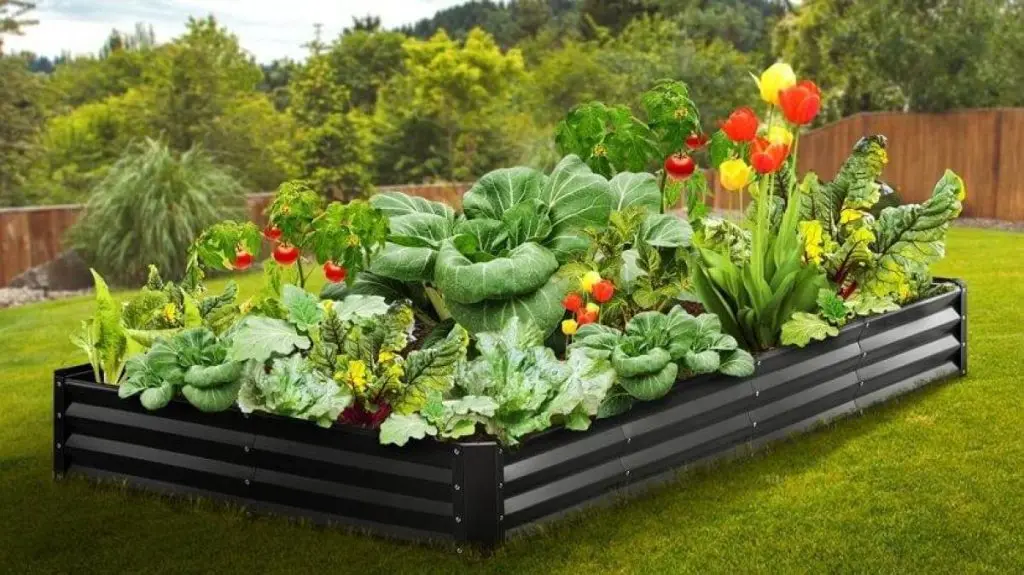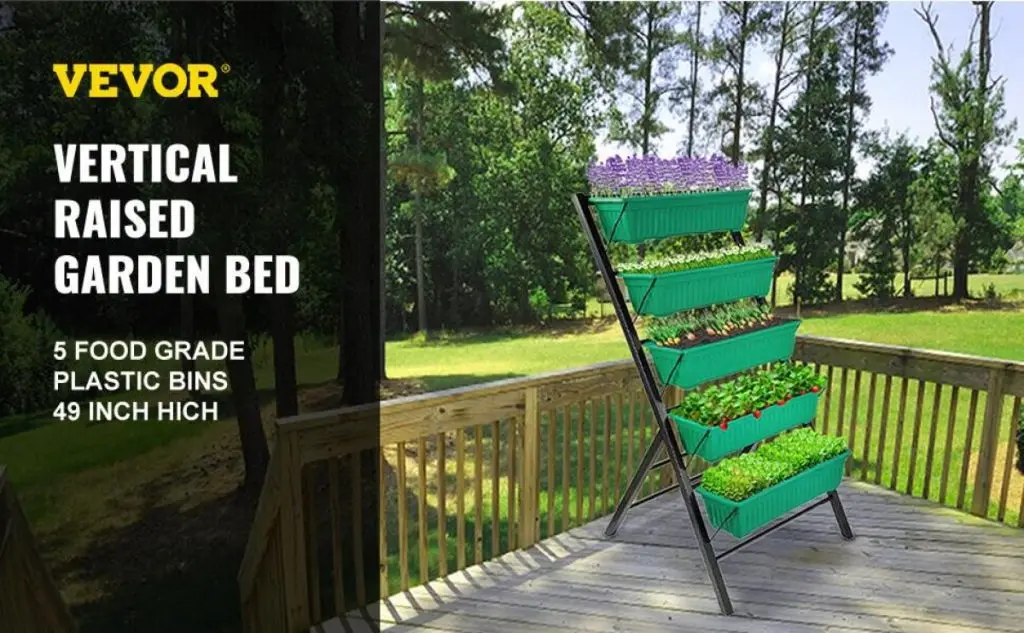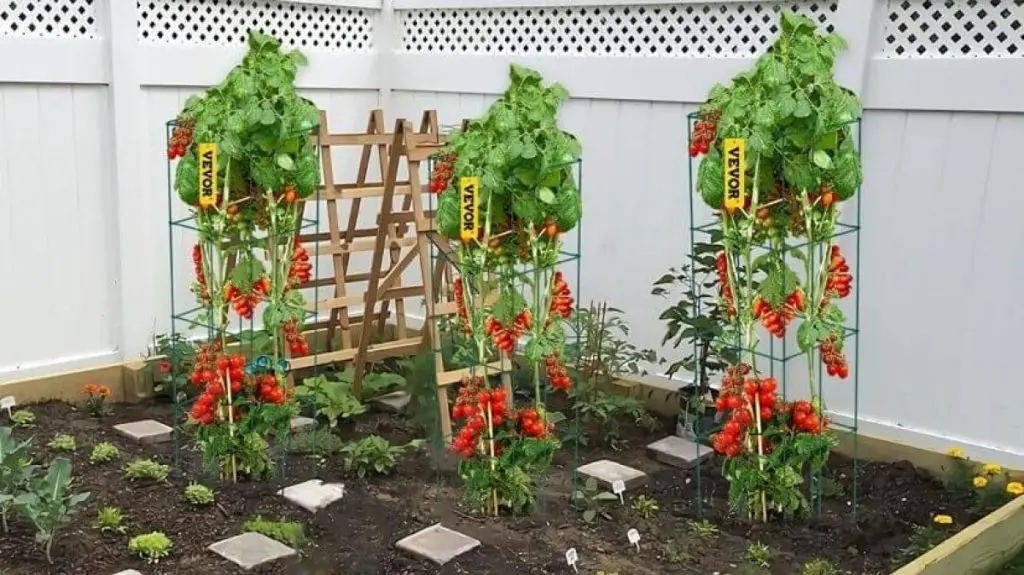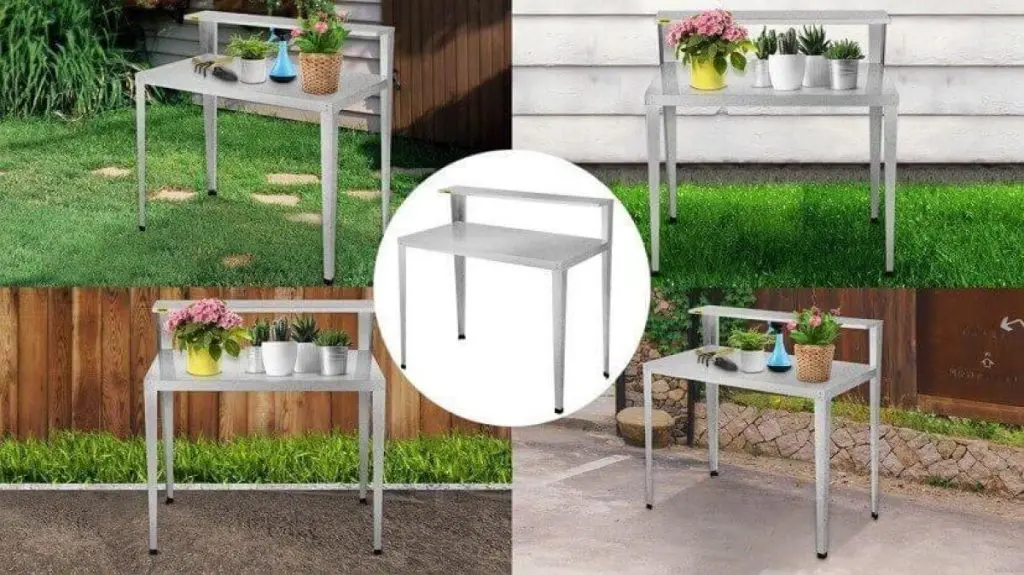Raised garden beds are often seen as a modern invention, but surprisingly they really go way back. In the medieval times, garden beds were typically raised and edged on the sides with wattle fences serving as raised bed garden materials. 500 years later in the 18th century preceding when people went around on horseback, Parisian market gardeners scooped horse manure off the streets and stables to build up their plots.
Sometimes, this unique topsoil was as tall as a meter, sometimes two. Whether in the medieval or modern period, the concept of raised garden beds have always been a game changer for gardeners, with benefits ranging from improved soil quality to enhanced pest control. These benefits however, are dependent on one important decision: selecting the best materials for raised beds.
Your choice of material for the raised bed impacts longevity, appearance and overall success of your efforts. Currently, we recommend garden beds from VEVOR. For instance, this galvanized VEVOR garden bed and other models from the brand offer outstanding features and qualities, including catering to different needs and preferences. Whether you’re a newbie or experienced gardener, VEVOR has the right product for you.
Table of contents
Benefits of Raised Garden Beds
Raised garden beds are not just some fanciful trend gardeners choose to follow for the sake of aesthetics, they provide tangible benefits that can really evolve your gardening experience. Here are some of the advantages of having raised garden beds.
Improved Soil Quality
Raised beds can help you create the perfect soil mix customized for your plant’s specific needs, leading to better growth and yields.
Enhanced Drainage
One advantage peculiar to raised beds which you won’t normally find with traditional garden plots is superior drainage. Raised garden beds prevent waterlogging and reduce the risk of root rot.
Easier Weed Control
Granted, weed is an issue with all types of gardening. However, using raised beds creates some sort of physical barrier that limits weed invasion and makes it easier to deal with unwanted growth.
Better Pest Control
Raised beds provide elevation for your plants, thereby protecting them from ground-dwelling pests. That way, you can reduce the need for chemical interventions.
Key Factors in Selecting Raised Bed Materials
Choosing the best material for raised beds is very important in ensuring it serves its purpose effectively and lasts for years. Here are some important factors to consider:
Durability
You need your raised bed strong enough to withstand various weather conditions, for best results and longevity. Durable raised garden bed materials like metal and concrete can resist rot, rust, and degradation. If you’re interested in longevity, you should look out for these materials.
Cost
Budget is always going to be a consideration. Truly, raised garden bed materials like wood are more affordable, but they also require more maintenance over time compared to other options like metal or concrete. You’ll need to decide which is more important, cost or quality. Affordability matters, but it’s always best to strike a balance.
Sustainability
Our world today is becoming more and more environmentally conscious and for good reasons. If sustainability means something to you as a gardener, it’s best to look out for materials like sustainably sourced wood or recycled plastic as a priority. These options minimize environmental impact without neglecting the need for durability.
Aesthetics
The material you choose should ideally complement your garden’s overall design if you have one. Wood has a natural, rustic look, while metal and plastic will give you a more modern feel. Concrete, though less visually appealing, can be a good fit for certain garden styles.
Best Materials for Raised Garden Beds

These are some of the best materials for raised garden beds:
Wood
Wood is one of the top materials used for building raised garden beds. We discuss the pros and cons of this choice of wooden raised garden beds below.
Pros
Wood is valued amongst gardeners not only for how versatile it can be, but also for its natural beauty. It is also relatively inexpensive and easy to work with. DIY enthusiasts are a particular gardening demographic that typically prefers to use wood for their raised garden beds.
Cons
However, for all its benefits, wood is prone to rot and insect damage, especially for residents of damp climates. That’s not to say you definitely can’t use wood for your raised garden beds. You can, but note that it will require regular maintenance, including sealing and treatment, to prolong its life.
Types Of Wood
Cedar and redwood are superior choices because they are naturally resistant to decay and insects. Pressure-treated pine is also common but be extra careful when handling them to avoid chemical exposure.
Recommended For Your Project
Metal
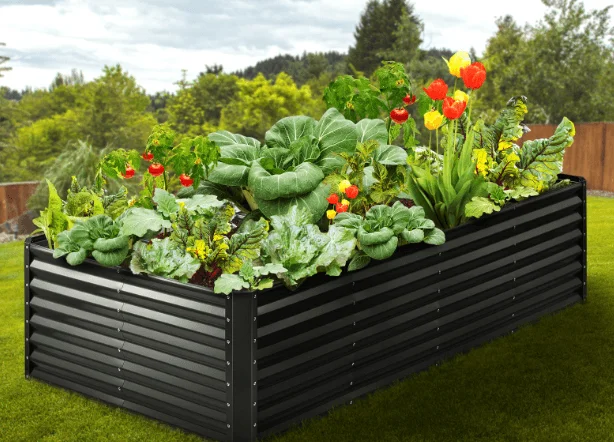
Metals are another top choice for building raised garden beds. In fact, many of the top rated garden beds in today’s market are made from metal materials.
Pros
Metal raised beds are really cool to use, especially those made from galvanized steel. They are highly durable and resistant to pests and rot. Most importantly, they can last for decades with very little maintenance.
Cons
Metal is typically expensive, which could make it out of reach of certain budgets. It also tends to conduct heat, making it an issue in hot climates. It’s also heavier, potentially making the installation process more challenging.
Types of Metals
Galvanized steel and corrugated metal are popular choices for raised beds due to their strength and longevity. Aesthetics-wise, metal materials also add a modern, industrial touch to garden spaces.
Recommended For Your Project
Plastic
Many raised garden beds are also made from plastic materials. So, what are the benefits of drawbacks of planter beds sourced from plastic? Get your answers below.
Pros
Plastic raised beds are lightweight, and that’s straight away its most appealing feature. Asides that, it is also affordable, and resistant to rot and pests. Being lightweight also makes it relatively easy to assemble, and it often comes in modular designs that can be customized to fit your space.
Cons
Durability and its lightweight nature are strong points of plastic as raised bed building materials, but they don’t have the same lifespan as metal or concrete. It can also lack the aesthetic appeal of natural materials like wood.
Types of Plastic
Recycled plastic and composite materials are eco-friendly options if you are pro-sustainability. They also offer a good balance of durability and sustainability.
Concrete
Here is all you need to know about the pros and cons of using concrete for planters beds. You will also learn about the best concrete materials to use.
Pros
Concrete is the most durable material for raised beds, typically because it offers the most longevity and drainage. It ideally comes in handy for permanent installations in gardens where long-term durability is important.
Cons
The downsides to using plastic as raised bed garden materials includes its heavy weight, difficulty of installation, and relatively high cost. These often put gardeners off using concrete even when they want to. Concrete can also be less aesthetically pleasing compared to other materials.
Types of Concrete
Cinder blocks and concrete panels are common materials for raised beds amongst gardeners for the strength and durability they possess. Typically used for large or permanent garden beds.
Comparing Raised Bed Materials
When comparing materials, you should weigh the pros and cons based on your specific gardening needs:
Durability Comparison
Concrete is unmatched in durability. The only raised bed building material that comes close is metal but even that is a step below. Wood and plastic are also durable but they tend to require more maintenance.
Cost Comparison
Wood is the most budget-friendly option if cost is a big concern, however, the cost of long-term maintenance can render that redundant. Plastic, on the other hand, offers a mid-range price, while metal and concrete are on the higher end.
Sustainability Comparison
For advocates of sustainability, wood—especially those obtained from sustainable sources— and recycled plastic are the best options. Metal and concrete also have a higher impact on the environment.
Aesthetics Comparison
Wood will give your garden a timeless, natural look. That’s what makes it a favorite for lovers of traditional gardens. Metal and plastic provide a sleek, industrial, and modern appearance. As for concrete, it is more utilitarian.
Maintenance and Care of Raised Garden Beds
Quality raised garden beds can last and perform to optimal levels, but regular maintenance is key. Here are some pointers to help you go about it:
Regular Inspections
Always look out for signs of wear, damage, or pests from time to time. Intensify your inspections especially after harsh weather conditions when damages are more likely to occur.
Seasonal Care
Prepare your beds for each season. Winterize in colder months and fertilize during the growing season.
Pest and Weed Control
Implement preventive measures such as mulching periodically. You can also use organic pesticides to manage pests and weeds effectively.
Soil Health
Regularly refresh the soil in your raised beds to maintain optimal nutrient levels and structure. This will help to reinforce your plant growth.
Conclusion

What stands gardeners today apart from the gardeners in medieval and 18th century times, is the availability of options to choose from. This article has answered the question: what are good materials to build raised garden beds? Once you choose the best material for raised beds, you’ve taken the first step towards creating a productive and enjoyable gardening experience.
By considering the above-mentioned factors like durability, cost, sustainability, and aesthetics, you can find the right material that meets your needs. Currently, we recommend that you buy raised garden beds from reliable manufacturers like VEVOR. The brand offers a variety of high-quality raised garden beds that cater to all preferences and requirements. Visit the VEVOR website today to explore our quality selection and find the perfect bed for your garden.


